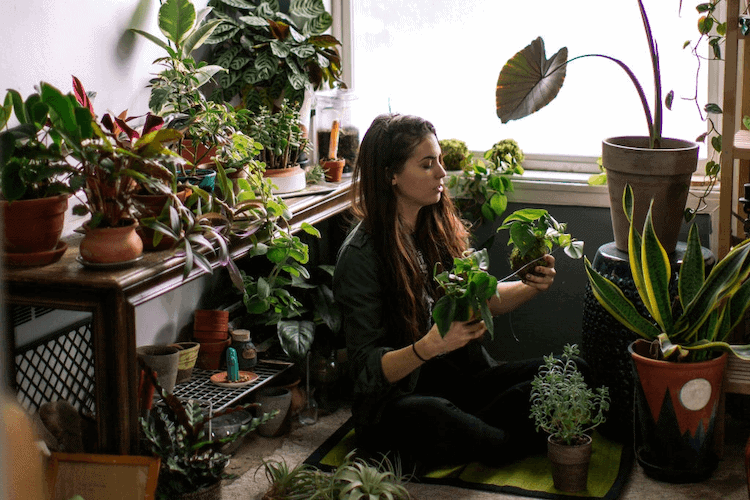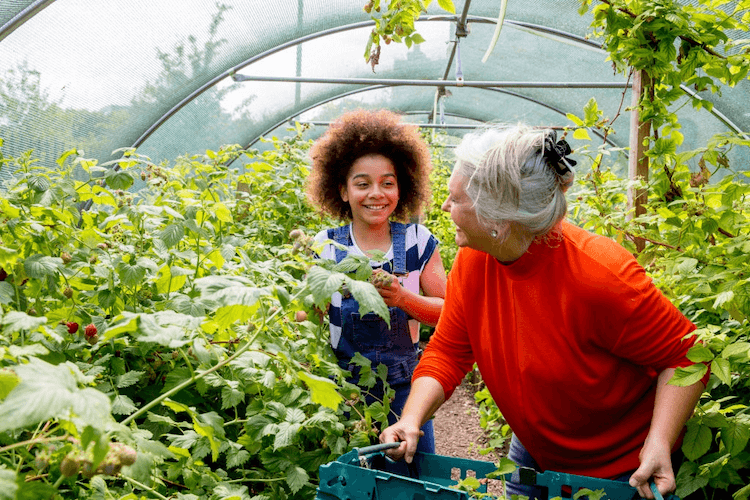Can you plant tomatoes and cucumbers together? This is one of the many questions we often see in our email, so we decided to make a post about it.
Cucumber is one of the most popular green vegetables in the United States. It is a common vegetable to see in almost every garden in the United States.
Cucumber is also a fast-growing vegetable that requires just adequate water and sunlight; as a result, gardeners want to grow it with companion plants- that is, plants that can be grown alongside cucumbers.
Tomatoes are also popular garden vegetables and gardeners’ love to grow them. Just like cucumber, tomatoes require only adequate sunlight and water to thrive.
Tomatoes and cucumbers grow well as companions, although many texts claim that tomatoes love carrots and not cucumbers. But tomatoes and cucumbers do grow well together.
Read Also: What Not to Plant with Tomatoes
Table of Contents
Can You Plant Tomatoes and Cucumbers Together?
Yes, tomatoes and cucumbers can be planted together. This is as a result of the compatibility between tomatoes and cucumber.
They both require a similar amount of time to reach maturity, which is between 50 to 100 days, depending on the variety planted. They thrive in alkaline soils and require an adequate supply of water and sunlight.
During planting, cucumber can either be allowed to grow on the ground in between tomato plants or trained to grow on the vines used to support tomato plants. Whichever manner you choose to plant these companion plants, it is tough for pests to attack them as a result of diversity.
What is Companion Planting?
Companion planting is the process by which gardeners plant two or more plants that are beneficial to one another on the same quality soil. These companion plants have the ability to enhance the growth and optimal development of one another.
When plants and vegetables grow in the soil, each of them takes up either nutrients or moisture from the land and environment. Some of the plants, while taking up these nutrients and moisture, also give something back to the soil or nearby environment.
Some of the things given back by the soil are sometimes too beneficial to other plants. Hence the need to find other plants that are lacking in such qualities and grow them in the company of the useful plant.
The relationship between companion plants is mostly symbiotic, that is, each derives benefit from the other. This relationship is the concept behind companion planting.
Therefore, care should be taken while planting companion crops to ensure that the crops do not harm each other. Plants with opposing characteristics will damage each other when planted in the company of each other.
Benefits of Companion Planting
Improves Plant Flavor
One of the benefits of companion planting is that the companion plants help improve the taste of each other, as a result of the beneficial nutrients they give back to the environment and surrounding companion plants.
For instance, when a tomato is planted alongside basil, the tomato tastes better than it would if it were planted alone.
Improves Pest Control
Since companion plants are grown together for their symbiotic benefits, most of the plants grown together possess the ability to get rid of the disease-causing organisms.
The different plants grown together provide diversity to the soil, which in turn offers insects diversity. Insect diversity reduces the number of parasitic microorganisms in a garden.
Improves Quality of Plant Product
Companion planting leads to the production of larger crops. This is as a result of the abundance of conducive and necessary nutrients available in the soil and the environment where it is grown.
For instance, when corn, beans, and squash are grown together, corn helps them for climbing, while beans adequate nitrogen and shade to the roots.
With all these optimal conditions necessary for growth present, you would hardly harvest poor quality crops and vegetables.
Read Also: How to Grow Strawberries In Michigan
Maximizes Garden Space
If you ask most urban gardeners why they practice companion planting, they would tell you it is to maximize garden space. If you have a shortage of garden space, you may consider growing companion plants in the area you have and watch them blossom!
Conclusion
Tomatoes and cucumbers are compatible plants and can be grown together under optimal conditions. However, adequate air circulation should be provided to avoid both plants developing molds. They are both very prone to molds, regardless of being planted together.







Leave a Reply